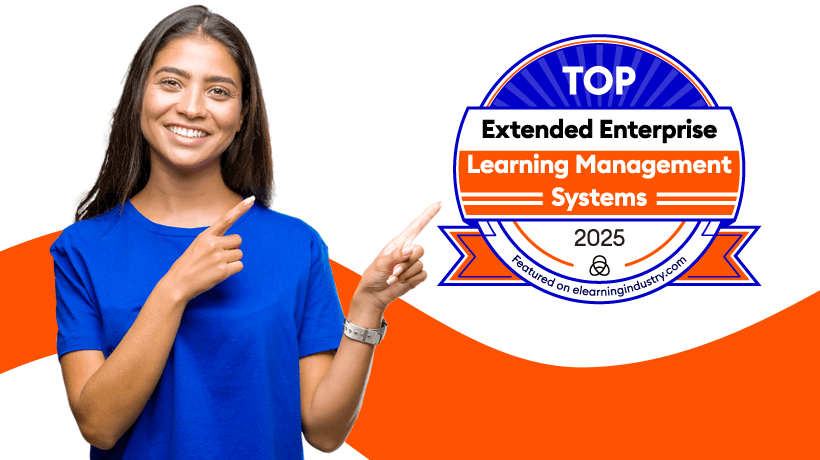Top Extended Enterprise LMS Implementation Challenges And Ways To Hurdle Them
When it comes to doing your due diligence for finding the best-extended enterprise LMS for your organization, you’ve put in the time. Months and months, or maybe years, evaluating vendors, capabilities, support, and more until you’ve found the perfect match. Now’s the time to do your due diligence for its implementation.
Many don’t realize that the implementation of your extended enterprise LMS is just as critical as the selection. If you don’t set it up to execute on your needs or advertise its capabilities, then you won’t get the value you expected when you made this huge investment. Plus, you could end up with a very costly implementation that drags on for months.
To help speed your journey, I’ve compiled the top 5 obstacles for extended enterprise LMS implementations, and how to overcome them.
Top Obstacles For Extended Enterprise LMS Implementations And How To Overcome Them
1. Lack Of Sponsorship
The number one thing you can do to ensure a successful implementation of an extended enterprise LMS is finding a passionate sponsor. One who can set clear, strategic goals and make decisions. Without this kind of ownership, your extended enterprise LMS solution will die a fast death.
A few other things to beware of are:
- Setting goals that are too specific.
Consider the needs of your entire extended enterprise, not just smaller or louder groups. Those who feel they have limited input or ownership in the LMS, will be slow adopters. - Having a single-minded steering committee.
Try, instead, to develop a group comprised of department-based LMS owners within sales, HR, business units, the extended enterprise, etc. This enables your lead sponsor to make sure each departments’ specific needs are being met and helps to quickly resolve conflicts.
2. Not Knowing Each Audience’s Needs
"If you fail to plan, you plan to fail". This is sage advice. Don’t wait until you start your implementation to properly define each external learning audience, how they’ll be using the LMS and, most importantly, how the LMS will benefit them.
Here are few questions for getting started:
- What are the various groups within your extended enterprise, or else EE, that have training needs, now and in the future? Are they customers, partners, distributors, etc.?
- Who can represent the specific needs of each EE audience on your steering committee?
- How will members of each audience interact with the training content? Do they prefer mobile access? Will they want on-the-go content that’s consumable offline?
- Will any audience need localization for their training content or a global eCommerce tool?
- Are there job, or role-related, compliance requirements that need to be considered?
3. No Learning Roadmap
In addition to setting clear, strategic goals, you should do a thorough analysis of what is done to train your extended enterprise today, and what their learning requirements will be in the near future and long-term.
Not developing your "learning roadmap" before you purchase an extended enterprise Learning Management System will ensure that:
- The system you choose may not meet all of your desired requirements.
- Your implementation will be delayed as your project team tries to find ways to meet these missing needs.
To avoid these headaches, run a pre-implementation training discovery process that includes these important questions:
- What extended enterprise learning programs are currently in place?
- Will the training be classroom-based, vILT, self-paced (web-based learning, videos, knowledge documents, etc.) or a mix (i.e. blended learning)?
- Will we need to outsource any new training development?
- How will each EE training program be tracked?
Knowing the entire scope of the training needed by your extended enterprise establishes the groundwork for your LMS to meet these requirements. Moreover, it streamlines your implementation.
4. Overlooking An Adoption Plan
More often than not, organizations focus on the delivery of a Learning Management System and not the adoption. Just because you give your extended enterprise a fantastic Learning Management System, it doesn’t mean they’ll use it! So, now is the time to identify how and when to roll out your new LMS to each external learning audience.
You may find that all learning groups can be included in a single implementation project. Or, conversely, you may find that a phased rollout is unavoidable and needs to be addressed as soon as possible. Undoubtedly, it’s better to know now, then later!
Your adoption plan should also include the change in management strategies for every EE group. Think about how you will communicate the new solution. How will you ensure your audiences know how and are willing, to use it? You probably won’t have this answered before you start, but your LMS adoption plan should be on your radar and included as part of your LMS implementation process.
5. Failing To Implement A Governance Model
Your extended enterprise LMS implementation is not an endpoint. Rather, it’s just the beginning. If you fail to establish clear and concise rules of engagement for its administration, you’ll find that your shiny, new Learning Management System will quickly become a jumbled mess of bad data, full of confusing and ineffective interactions with external learners.
Regardless of how your LMS administration is structured -a group of admins or a group of rule-based admin teams- you must put a governance model in place to ensure consistency and ongoing success. This is especially important for extended enterprise LMSs because you may have dramatically different programs, and usage, depending on the learning audience (customers vs. partners, for example). Stay ahead of the game with a solid governance model.
Keep An Open Mind And Remember: Change Is Good!
If we’re being honest, implementing any kind of enterprise software is not always easy. You’ll have peaks and valleys. My best advice for making the process as seamless, and stress-free, as possible is to keep an open mind. Yes, there will be a lot of change. But if you’ve sufficiently planned for it and take the steps to communicate it properly, the change will be good.
Another tip: Instead of trying to recreate what you’ve already done and how you used to do things, be flexible, so you can evolve your processes, and create a more efficient and effective learning solution for all of your external learning groups








